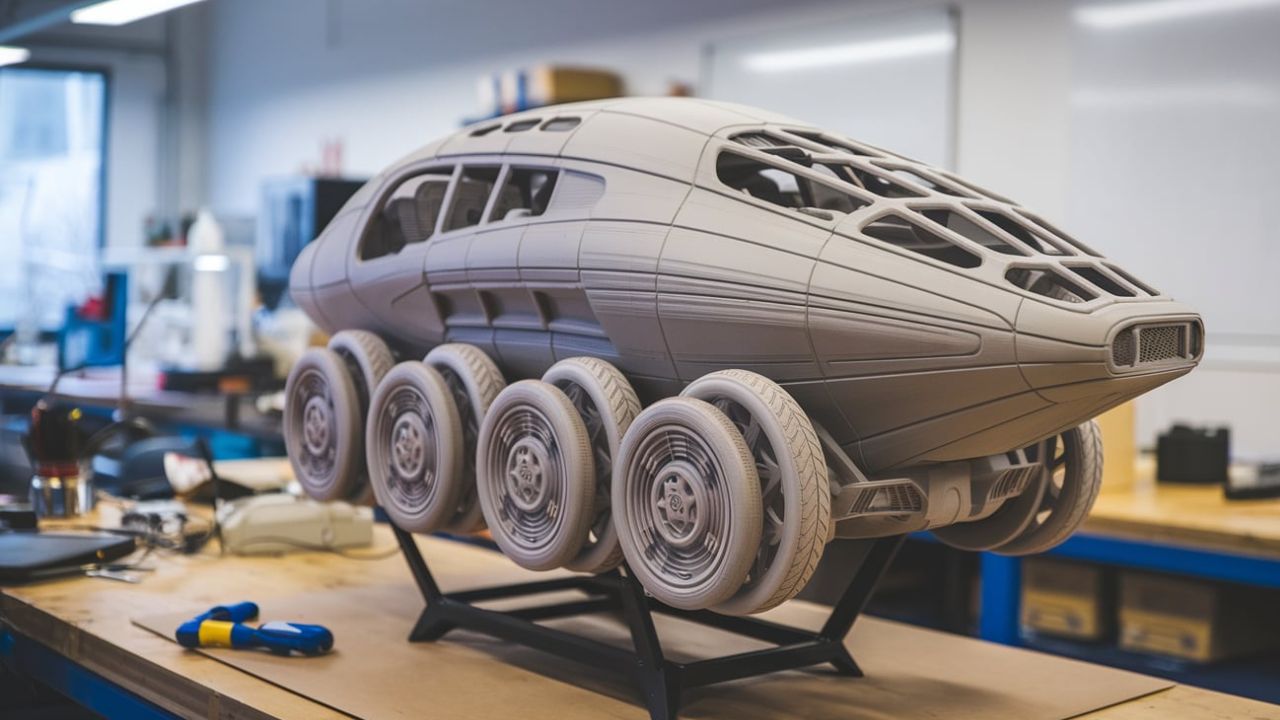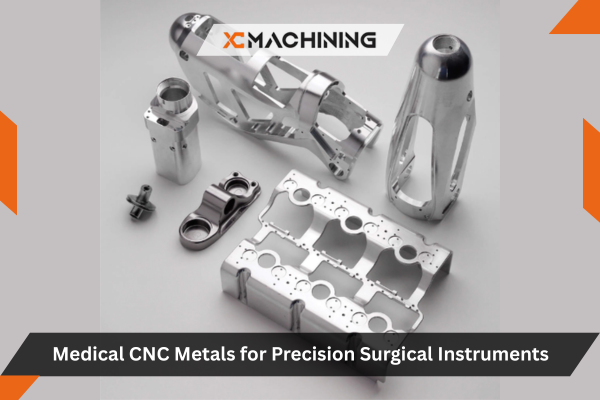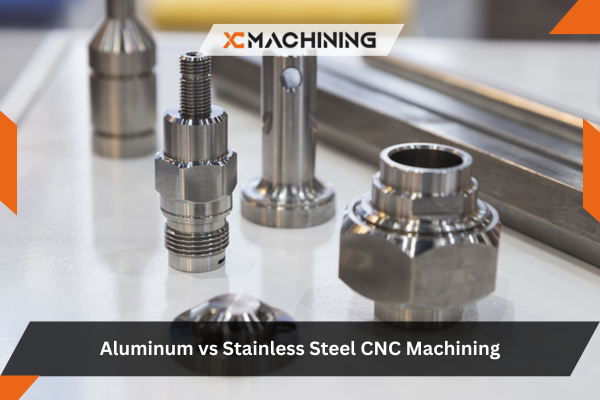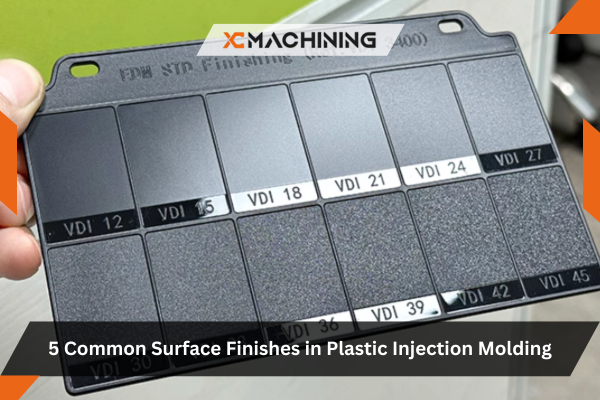Imagine you’re working on a new product design, and you have a great idea in your head. The problem is, you can’t quite figure out how it will look or work in real life. Traditionally, you’d have to wait weeks to get a prototype made. But now, with 3D printing in prototyping, things are different. Instead of waiting weeks, you can get a prototype printed in just a few hours! This speedy process is helping businesses across various industries innovate faster and create better products.
3D printing has changed the game for designers, engineers, and manufacturers. By allowing them to quickly create prototypes, they can test, tweak, and improve products more efficiently than ever. In this blog, we’ll explore how 3D printing in prototyping is speeding up innovation in industries like automotive, healthcare, aerospace, and more. Whether you’re looking to create a new product or improve an existing one, 3D printing is making the process faster, cheaper, and easier.
What is 3D Printing in Prototyping?
So, what exactly is 3D printing in prototyping? It’s a method of creating three-dimensional models from digital files, usually layer by layer. In prototyping, this means you can take your idea from a computer screen and turn it into a real object within hours or days.
Unlike traditional methods, where you’d need molds, tools, or machining, 3D printing only requires a digital design and material, like plastic or metal powder. The printer builds the object layer by layer, meaning it can create complex shapes that would be impossible to make using other methods.
3D printing is often used in prototyping because it’s fast and flexible. You can easily make changes to the design without having to start the process over again. This flexibility helps businesses innovate faster and reduce the risk of errors.
Speeding Up the Design Process
Traditionally, creating a prototype could take weeks, or even months, especially for complex parts. With 3D printing in prototyping, you can cut that time down dramatically. Imagine working on a car design and wanting to test a new part. Instead of waiting for days to make the part and test it, you can print it in a matter of hours, check if it works, and make adjustments immediately. This speed allows engineers to experiment more and improve their designs faster.
By getting prototypes quickly, companies can move from one stage of product development to the next much faster. Designers don’t have to wait for long lead times on parts and can test ideas in real time. This speed is a big advantage, especially when you’re working under tight deadlines or when launching a product that needs to hit the market quickly.
Cost Efficiency in Prototyping
One of the biggest advantages of 3D printing in prototyping is its cost-effectiveness. Traditional methods often require expensive molds, tooling, or machines that take time to set up. 3D printing, on the other hand, requires no such tools, so the initial cost to create a prototype is much lower.
With 3D printing, you only pay for the material used in the print, which makes it perfect for companies working on tight budgets. And since prototypes can be printed so quickly, there’s less risk of making costly mistakes in the design phase. Plus, the ability to print prototypes multiple times without starting from scratch means companies save money in the long run.
In industries like aerospace or automotive, where the cost of failure can be high, 3D printing in prototyping allows engineers to catch mistakes early and avoid expensive rework.
3D Printing in Automotive Industry Prototyping
In the automotive industry, the ability to quickly test and modify designs is key to staying ahead. Traditional prototyping methods could take weeks, and each mistake could delay the project. But with 3D printing in prototyping, car manufacturers can produce prototype parts like engine components, interior elements, and body panels in a matter of hours.
Automakers can create realistic models for crash testing, safety features, and airflow analysis much faster. 3D printing also helps designers experiment with new materials, from lightweight composites to eco-friendly plastics. This results in faster innovation and the creation of more efficient, cost-effective parts.
Fact: Companies like Ford use 3D printing to rapidly prototype car parts, which speeds up their design process by reducing both time and cost for each iteration.
3D Printing in Healthcare and Medical Prototyping
In healthcare, 3D printing in prototyping is helping to improve patient outcomes by allowing for the creation of custom medical devices. Surgeons and doctors can use 3D-printed models of patients’ organs or body parts to plan surgeries more effectively. These models are much more accurate than traditional models made from clay or plastic, and they help doctors understand complex cases before performing surgery.
For medical device companies, 3D Printing in Prototyping allows them to quickly test new products, like prosthetics or implants, before mass production. This process saves time, reduces costs, and ensures that products fit well and work as intended. Doctors can even test out new devices on 3D-printed prototypes before approving them for use on real patients.
For example, custom prosthetics can be made in a fraction of the time it used to take with traditional methods, giving patients access to better solutions more quickly.
3D Printing in Aerospace Prototyping
The aerospace industry relies on precision and reliability, and 3D printing has become an essential tool for prototyping in this sector. Aerospace engineers use 3D printing in prototyping to test and refine parts for airplanes, satellites, and spacecraft. By creating accurate, functional models of parts like turbine blades, engine components, and even structural elements, manufacturers can test designs much faster than with traditional methods.
Using 3D printing, aerospace companies can also reduce the weight of parts by designing them with less material, which is a critical factor for efficiency in flight. Lightweight materials, like titanium or composites, are often used in aerospace parts, and 3D printing allows for more complex geometries that traditional methods can’t achieve.
The ability to test designs quickly and efficiently means faster production times and a quicker go-to-market timeline.
Creating Complex Shapes in Prototyping
One of the coolest things about 3D printing is its ability to create complex shapes that would be almost impossible to achieve with traditional manufacturing methods. Think about a part with intricate curves, tiny holes, or moving parts built into it. Traditional methods like injection molding or casting struggle to make these designs, but 3D printing can handle them with ease.
This ability allows designers to experiment with more creative and innovative ideas. They can design parts that are lighter, stronger, or more efficient than traditional designs. For example, 3D Printing in Prototyping is used to create lattice structures—a design that’s strong but uses less material. This is especially useful in industries like aerospace, where weight savings can make a huge difference.
By enabling complex designs, 3D printing speeds up innovation and helps businesses stand out with unique, efficient products.
3D Printing in Consumer Product Prototyping
Consumer products like gadgets, toys, and kitchen tools often go through multiple design changes before reaching the market. With 3D printing, designers can create functional prototypes in a short amount of time, test them with real users, and make adjustments based on feedback. This iterative process allows for quicker development and fewer design flaws.
Rather than making multiple prototypes by hand or using expensive molds, designers can simply print a new version of the product. This reduces costs and speeds up the time it takes to bring new products to market.
For example, companies in the consumer electronics sector can use 3D printing in prototyping to quickly test new phone cases, headphones, or smartwatches before mass production.
Speeding Up Innovation in the Fashion Industry
Did you know 3D printing is also making waves in the fashion industry? Designers are using it to create intricate clothing, shoes, and accessories that would be impossible to make with traditional sewing or molding methods. 3D Printing in Prototyping allows designers to quickly create prototype items and test different materials, colors, and textures.
For instance, 3D printing can create customized shoes that are molded perfectly to a person’s foot. Designers can try out different materials, shapes, and structures without committing to expensive production methods. This reduces waste and makes it easier to bring innovative fashion ideas to life.
Fashion designers can also create limited-edition collections or custom designs without the need for large-scale manufacturing. It’s a whole new way of thinking about sustainable fashion and creative design.
3D Printing Reduces Material Waste in Prototyping
One of the major benefits of 3D printing in prototyping is how it reduces material waste. Traditional manufacturing methods often require large blocks of material that are cut down to shape, producing a lot of leftover scraps. With 3D printing, the material is used exactly where it’s needed, and no excess is produced.
This efficiency helps companies save money and reduce their environmental footprint. Whether it’s plastics, metals, or composites, 3D printers only use what’s necessary for the design. This is great for businesses that want to reduce waste without sacrificing quality or production speed.
Fact: 3D printing can reduce material waste by up to 90% compared to traditional manufacturing methods, making it a key player in creating more sustainable products.
Faster Iterations in Product Design
When it comes to prototyping, speed is everything. Every time a designer wants to test out a new idea, they have to make adjustments to the prototype. Traditionally, this could take a long time and cost a lot of money. But with 3D printing, changes can be made quickly and easily.
Designers simply modify the digital file and print out the updated prototype. This allows for multiple iterations in a short period, which speeds up the product development process. As a result, products can be tested, improved, and refined much faster, giving companies a competitive edge.
For businesses, this means products can be launched sooner, and they can keep up with fast-moving trends in their industries.
3D Printing in Prototyping for Startups
For startups or small businesses, 3D printing is a game-changer. Traditionally, making prototypes involved high upfront costs for tools, molds, and materials. But with 3D printing, startups can create prototypes quickly and cheaply. This makes it easier for small companies to compete with larger ones, as they can test ideas and bring new products to market without a huge investment.
3D printing helps startups avoid the high risks of traditional prototyping by allowing them to create and test ideas faster. It also gives them the flexibility to make changes on the fly without breaking the bank.
Enhancing Collaboration Across Teams
3D printing in prototyping is also improving collaboration between design, engineering, and manufacturing teams. In the past, the prototyping process often involved long waits between different departments. Designers would create a model, pass it to engineers, who would send it off to manufacturing for production—this could take weeks or even months. But with 3D printing, everyone can work together in real-time.
As more industries adopt 3D printing in prototyping, collaboration becomes even more seamless, ensuring everyone involved is on the same page. For businesses, this means fewer mistakes, quicker turnarounds, and more successful products.
3D Printing’s Impact on Supply Chains
One of the most significant changes 3D printing in prototyping brings is its potential to transform supply chains. Traditional manufacturing often relies on long supply chains, with raw materials shipped from all over the world, sometimes resulting in delays or increased costs. 3D printing can simplify these processes by allowing companies to print parts locally, reducing the need for long-distance shipping and excess inventory.
With 3D printing, companies can produce prototypes or even final products on-demand, making supply chains much more efficient. If a company needs a part, it can simply print it rather than waiting for a shipment. This reduces storage costs and ensures that companies are not overproducing products that may not be in demand.
Conclusion
3D printing in prototyping is more than just a trend—it’s changing the way products are developed across industries. With faster production times, lower costs, and the ability to create complex designs, it’s helping businesses innovate faster and more efficiently than ever before. Whether it’s in automotive, healthcare, fashion, or consumer products, 3D printing is speeding up the prototyping process and driving innovation.
So, how can 3D printing in prototyping help your business move faster? What changes can you make today to start taking advantage of this powerful technology?
FAQs
What is 3D printing in prototyping?
3D printing in prototyping is the process of creating a model or product prototype using a 3D printer. It allows designers to quickly build, test, and modify prototypes without the need for traditional manufacturing tools or molds.
- How does 3D printing speed up the prototyping process?
3D printing speeds up prototyping by allowing designers to create and modify prototypes quickly. Instead of waiting weeks for traditional prototypes, 3D printers can produce models in hours, enabling faster testing and iteration.
- Which industries use 3D printing for prototyping?
Many industries use 3D printing for prototyping, including automotive, aerospace, healthcare, fashion, and consumer products. It helps these industries test, refine, and produce innovative designs faster.
- What materials are used in 3D printing for prototyping?
Materials like plastic, resin, metal, and even biodegradable filaments are commonly used in 3D printing for prototyping. These materials offer flexibility and durability for different applications.





